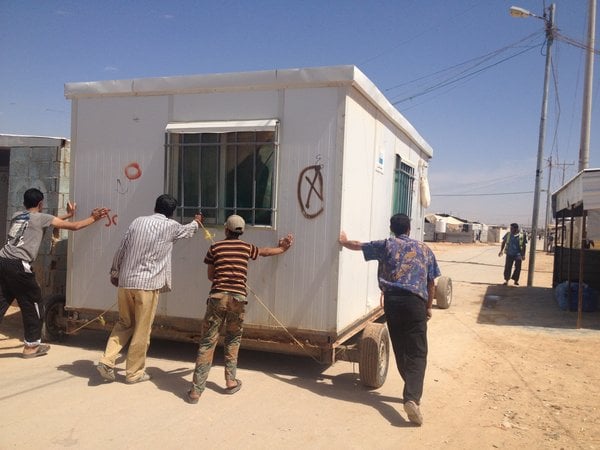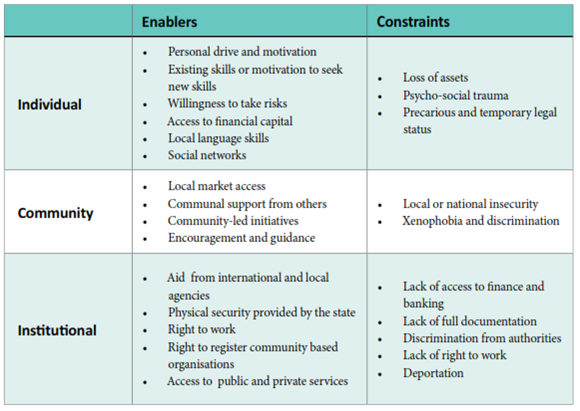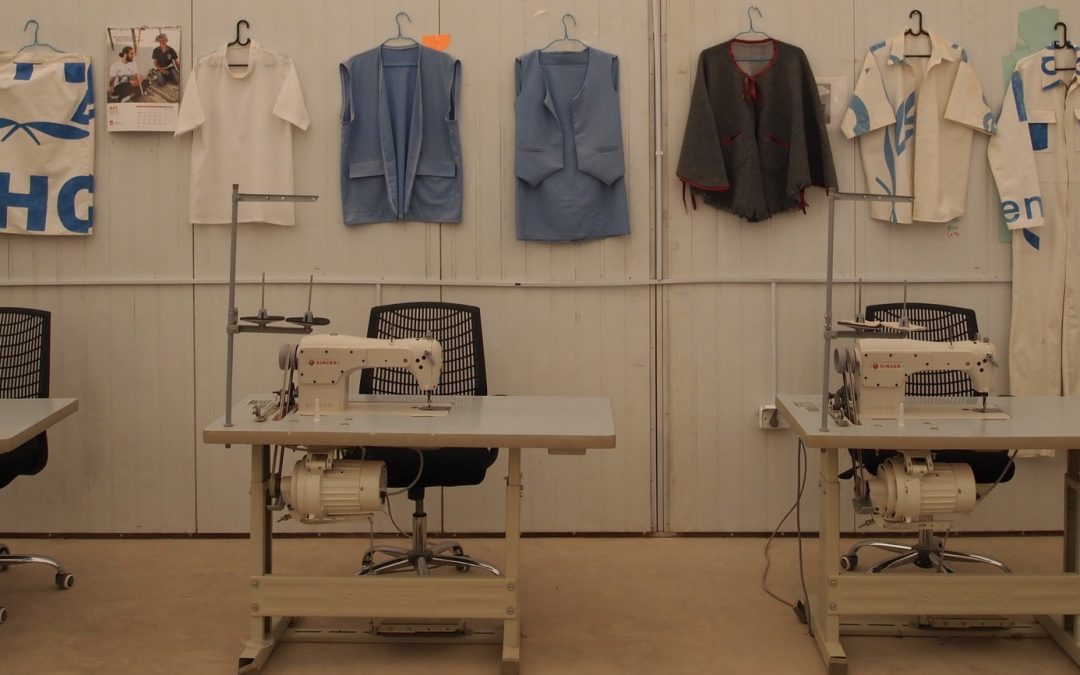Want to learn more about bottom-up innovation? Take a look at the Humanitarian Innovation Jam 2016 on Bottom-up Innovation. Local Challenges. Local Solutions.
Innovation from the perspective of refugees is too often missing in research and practice for refugee assistance. This has been the starting point of our research at the Humanitarian Innovation Project (HIP) as we seek to understand this missing ‘bottom-up’ perspective of innovation. For us bottom-up innovation can be defined as the way in which crisis-affected communities engage in creative problem-solving, adapting products and processes to address challenges and create opportunities.
Early last year, during discussions as part of the build-up to the World Humanitarian Summit (WHS), this same gap in understanding and supporting the innovation of affected communities was raised as a concern. This perspective has more and more become an important topic within the innovation debate as it is understood that traditional ‘top-down’ innovations can easily make inaccurate assumptions about the communities and cultures they seek to help. As a result the WHS funded field trips for HIP to observe what innovation looked like across a range of refugee communities. The findings from our field work were published in the ‘Refugee Innovation’ report launched in July last year.
We believe that through having a better understanding of what the innovation process looks like for affected communities, humanitarian policy and practice may be improved. If designed to be supportive of the existing skills and capacities that occur at this grassroots level in a crisis, more appropriate and sustainable solutions may be found – an important goal for supporting refugees who find themselves in exile for an average of 17 years.
In our work we use innovation as a framework to understand and observe processes of problem-solving – from problem definition, to solution identification, to adaptation of the solution, and scaling it up. The Refugee Innovation report brings together our findings of refugee innovators and their innovation processes in Uganda, Kenya, South Africa, Jordan and resettled refugees in the United States (US).
Whilst each new crisis creates a different environment for innovation, across each of our research sites we found refugees actively creating new business and social initiatives. In rural locations (such as Uganda’s refugee settlements, Kenya’s Kakuma camp, and Jordan’s Za’atari camp) we found a multitude of material adaptations and product innovations that refugees had created to enhance their physical environment or to create tools to earn a living. One fascinating example of this, which went against the grain of the assistance being provided by the international community, was the shelter removal trailers that entrepreneurial Syrian refugees had built in Za’atari. The trailers were made from fence posts taken from the camp boundaries, and the ‘removal men’ were earning an income from providing a service for Syrian families to move their shelter units around the camp. Syrians were reconstructing the architecture of the camp to be near family and friends, or extend their homes and shops. Even in this camp environment where the majority of services were controlled and provided by the government and international community, one NGO staff told us that “organisations are trying to keep up with the refugees.”

Photo of Syrian ‘removal men’ transporting a shelter inside Za’atari camp. Photo by Nina Weaver, Humanitarian Innovation Project.
Some of the social innovators we met during our research were particularly impressive. A youth group in Nakivale settlement in Uganda had built their own local radio station using only locally available materials and a studio on loan from their church. The radio shared important messages around the settlement, and after only two months of operating had already helped to reunify one refugee family. In Johannesburg we also met Zimbabwean artists who had engaged in their own research into living conditions at Lindela deportation centre in South Africa. The Creative Writers and Arts Workshop initiative was started by the young Zimbabweans and they published a book detailing their findings of the poor state of affairs in Lindela. They held a march to protest for change – which contributed to the advocacy efforts which led to later improvements made at the centre.
As part of the study we wanted to think about ways that the international community could better engage with and support the multitude of activities that refugees lead within their communities. Part of our analysis identified both enablers and constraints for refugee innovation at three levels – which help to frame ways in which support can be provided. The enablers and constraints were summed up firstly at an individual level, for individuals or households; secondly at the community level; and thirdly at an institutional level. The table summarising these is shown below.

Table of enablers and constraints for refugee innovation, Source: Betts, A. et al (2015) Refugee Innovation: Humanitarian Innovation that Starts with Communities. Oxford: Refugee Studies Centre
During the research we documented ad-hoc examples of where international agencies were starting to support this enabling environment for refugee innovation. In Uganda these included UNHCR’s Community Technology Access (CTA) centre (an internet cafe and room for computer classes) in Nakivale settlement which acted as a springboard for entrepreneurship in the camp. At the CTA one refugee used the space as an office where he could access electrical solar power and the internet, and other refugees leveraged their new computer skills to sell computer services around the camp – such as printing and music copying. One business grant project was also discovered in another refugee camp in Uganda, Kyaka II, a simple yet affective way to support refugee’s business initiatives. This type of support however wasn’t yet widely available or the norm in the provision of refugee assistance.
As part of the study we concluded with recommendations for the international community to better engage with refugees’ own bottom-up innovation. These were:
- Recognise the capacity of crisis-affected communities to engage in innovation.
- Understand the specific opportunities and constraints to bottom-up innovation in each context.
- Support an enabling environment for innovation by crisis-affected communities.
- Use participatory approaches to facilitate and support refugee innovation.
- Build a humanitarian funding mechanism to support bottom-up innovation.
HIP plans to take this research forward and continue to document ethnographic studies of refugees’ experiences of innovation, and conceptualise how the facilitation of bottom-up humanitarian innovation can be structured for the international community. As part of this effort, HIP is excited to be partnering with UNHCR Innovation’s next Humanitarian Innovation Jam this year, where local innovation is the focus of the event – a positive contribution and example of facilitating bottom-up innovation.
Photo credit: RSC/ L.Bloom
We’re always looking for great stories, ideas, and opinions on innovations that are led by or create impact for refugees. If you have one to share with us send us an email at [email protected]
If you’d like to repost this article on your website, please see our reposting policy.

